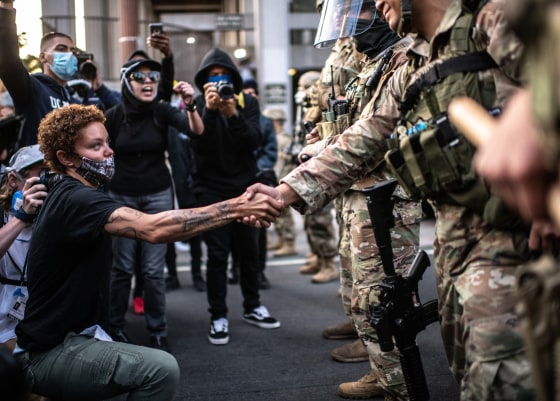Racial equity demands both emancipation and reconciliation.
The Emancipation Proclamation has time-honored historical significance. Issued by President Abraham Lincoln on Jan. 1, 1863, it led to the seminally transformative extrication of America's enslaved from the shackles of slavery. However, it provided neither the recompense for the deprivations of slavery nor the methodology by which reconciliation could eventuate. It literally left the formerly enslaved in a state of privation, in which survival was largely dependent upon the goodwill of their former slave masters, who begrudgingly and unwillingly complied with emancipation principally because of — and only after — losing the bloodiest war fought on American soil.
Centuries since, in the absence of reconciliation, the progeny of the enslaved have suffered and survived.
And even then, this "compliance" was often simply the swapping of one system of oppression (chattel slavery) for another (Jim Crow).
Centuries since, in the absence of reconciliation, the progeny of the enslaved have suffered and survived spiteful Black codes, dreadful convict leasing, harmful redlining and lawful segregation.
But perhaps now, the time for reconciliation is finally at hand, evinced following the events of Memorial Day — when this nation's suppressed turmoil and repressed racial tension erupted after it watched a Minneapolis police officer kneel on the neck of George Floyd for over 8 minutes. Floyd's death, coupled with the violent deaths of other Black people, like Breonna Taylor and Ahmaud Arbery, triggered a state of eye-opening unrest across a greatly incensed America, engendering a desire for transformational change consistent with an evolving zeitgeist.
Now is the time to formalize a long-overdue reconciliation process. Now is the time for the victims of racism and invidious discrimination to come to terms with the beneficiaries of the vestiges of our seminal sin — slavery.
And I believe such atonement and forgiveness can best be accomplished through an official Department of Reconciliation.
The Department of Reconciliation would augment — not supplant — an indispensable truth commission to set the twisted history of invidious discrimination straight. It would supplement — not supersede — a fair and just redress process.
In South Africa, the establishment of truth was an integral component of its often-referenced Truth and Reconciliation Commission, which provided for the investigation and broadcast of the nature, causes and extent of apartheid human rights violations.
This reconciliatory effort enabled South Africa to go on record and denounce apartheid, providing restorative justice for victims, coupled with an opportunity for national healing. Similarly, the United States of America must seek national healing grounded in truth from which reconciliation can flourish.
Notably, following World War II, Germany made key reconciliatory strides, including the banning of Nazi symbols and language, as well as anti-Semitic propaganda. Allowing any official recognition or celebration of a system of oppression would have hindered true reconciliation.
Within the United States, an essential function of the Department of Reconciliation would be the identification of and removal of icons that symbolize hate, racism and invidious discrimination. This would include statues and any other symbols glorifying, celebrating or commemorating slavery, as well as other forms of hatred.
Broadly, the pre-eminent goal of this executive body would be the elimination and prevention of systemic, institutionalized racism, as well as other forms of invidious discrimination against protected classes. Simply stated, the Department of Reconciliation would help address systemic and institutionalized transgressions against people in our country because of who they are or appear to be. Its budget would be the equivalent of not less than 10 percent of the Defense Department's budget to ensure that the department is continuously funded. With centuries of racism and invidious discrimination to reconcile and a goal of preventing future racism and invidious discrimination, the department would not sunset. This would be comparable to other executive departments, such as Labor and Defense.
It would be the task of the Department of Reconciliation to initiate an ongoing American priority of long-overdue reconciliation in policing, criminal justice, housing, banking, voting, employment, education, environmental justice, health care and social interactions.
A presidentially appointed, senatorially confirmed secretary of reconciliation would be charged with overseeing the functions of the department and presenting biannual progress reports to Congress. This person should have personal and professional experience with issues related to or organizations advocating for civil liberties, human rights and civil rights law.
The secretary's responsibilities would also include making recommendations to the president to improve existing law — and developing new laws — to end as well as prevent racism and invidious discrimination. Legislative recommendations could include: strengthening the penalty for denying loans on the basis of an applicant's protected characteristics (e.g., race, sex, etc.), streamlining federal laws to prosecute excessive force in policing, preventing the targeting of minority communities for hazardous waste sites and strengthening laws that allow testing for discrimination in housing. The implementation of these legislative suggestions would help ensure a more just and equitable society.
What we should have done immediately after emancipation, we can do now.



